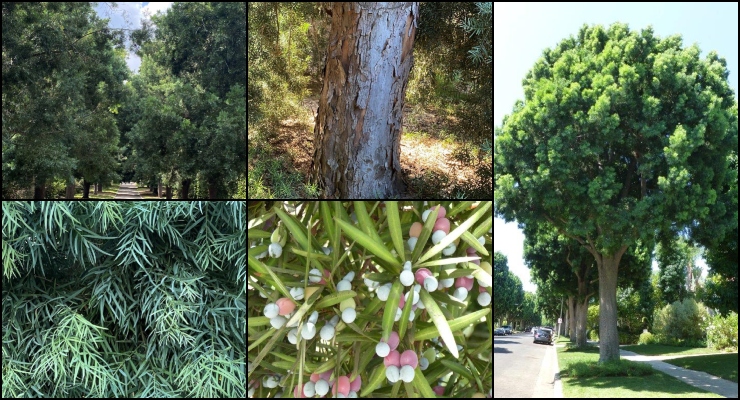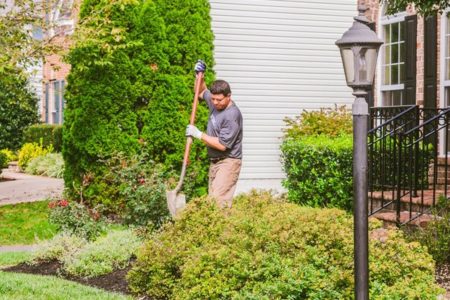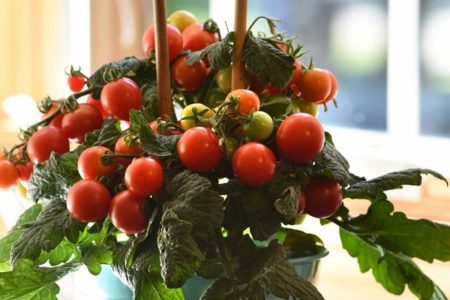
Each month, Pasadena Beautiful Tree Program Chair Emina Darakjy presents a ‘tree of the month’ in order to educate Pasadenans about the trees around them. Many people drive by trees they admire, but have no idea what they are called, or what their growing habits are. Pasadena Beautiful was founded in 1960 by a group of volunteers who saw a need to beautify their city and enhance its tree canopy.
The African Fern Pine, for the record, is neither fern nor pine.
The tree belongs to the Podocarpaceae family, is native to Eastern Africa, and can be found growing in Ethiopia, Kenya Uganda and Tanzania.
The name was changed to Afrocarpus falcatus when the tree was removed from its original genus of Podocarpus. You can still find this tree being sold at nurseries under the name of Podocarpus gracilior.
This is a medium to large evergreen tree with a rounded dense crown and a moderate growth habit, reaching a height between 50 to 60 feet tall and 30 to 40 feet wide. It makes for an excellent shade tree, and in its native African habitat, the tree is revered for its use as lumber.
The tree trunk is covered with a patchy multi-colored bark that tends to peel off. The leaves are fern-like, soft, narrow, bright-green at first, turning dark gray-green as the tree matures.
The Podocarpus gracilior is dioecious, which means it has 2 genders, both male and female. The female trees produce a fleshy fruit that is half an inch in diameter, green at first, then turning yellow, then purple when mature. The fruit can create a nuisance when it drops.
The Podocarpus gracilior is a tough tree that does well in our harsh urban environment. It requires very little maintenance. If you need to do some pruning to encourage new growth, do it in late winter or early spring. It is also a good idea to thin out the dense canopy from time to time to avoid branch breakage during high winds.
When used as a street tree, the lower branches have to be removed for pedestrian and vehicle clearance.
The Podocarpus gracilior can also be used as a screening hedge.
The tree performs better in full sun but can also grow in partial shade and thrives in many soil conditions. Avoid planting this tree in areas where frost is a problem.
The Podocarpus gracilior is sidewalk friendly with no known pests or diseases at the present. When young, the tree requires regular watering, but will become drought tolerant with maturity.
The Podocarpus gracilior is a very graceful and striking tree worthy of planting.










